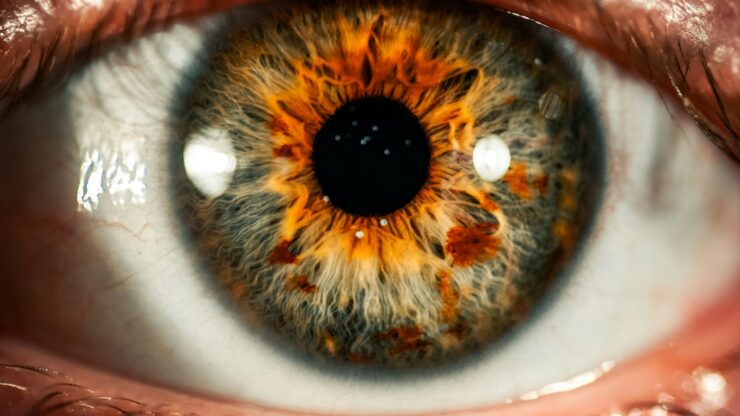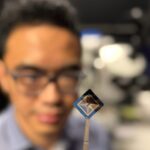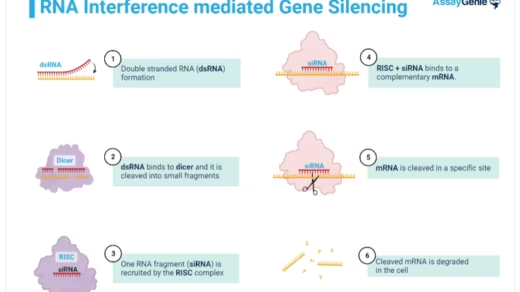PHOTOTRANSDUCTION
The photoreceptors convert, or transduce, light energy into changes in membrane potential. Phototransduction in rods has proven to be applicable to cones as well. Light stimulation of the photopigment activates G-proteins, which in turn activate an effector enzyme that changes the cytoplasmic concentration of a second messenger molecule. This change causes a membrane ion channel to close, and the membrane potential is thereby altered.
In complete darkness, the membrane potential of the rod outer segment is about -30 mV. This depolarization is caused by the steady influx of Na+ through special channels in the outer segment membrane. Sodium channels are gated by an intracellular second messenger called cyclic guanosine monophosphate, or cGMP. Light reduces cGMP, causing the Na+ channels to close, and the membrane potential becomes more negative. Thus, photoreceptors hyperpolarize in response to light.
The hyperpolarizing response to light is initiated by the absorption of electromagnetic radiation by the photopigment in the membrane of the stacked disks in the rod outer segments. The receptor protein is called opsin, and it has the seven transmembrane alpha helices typical of G-protein-coupled receptors throughout the body. The prebound agonist is called retinal, a derivative of vitamin A. The absorption of light causes a change in the conformation of retinal so that it activates the opsin. The bleaching of rhodopsin stimulates a G-protein called transducin in the disk membrane, which in turn activates the effector enzyme phosphodiesterase (PDE), which breaks down the cGMP that is normally present in the cytoplasm of the rod. This reduction in cGMP causes the Na+ channels to close and the membrane to hyperpolarize.
One of the interesting functional consequences of using a biochemical cascade for transduction is signal amplification. This amplification gives our visual system incredible sensitivity to small amounts of light. Rods are more sensitive to light than cones because they contain more disks in their outer segments and thus more photopigment, and also because they amplify the response to light more than cones do. Rods give a measurable response to the capture of a single photon of light, the elementary unit of light energy.
Phototransduction in cones is virtually the same as in rods; the only major difference is in the type of opsins in the membranous disks of the cone outer segments. The cones in our retinas contain one of three types of opsins, leading to short-wavelength or “blue” cones, medium-wavelength or “green” cones, and long-wavelength or “red” cones. The color that we perceive is largely determined by the relative contributions of short-, medium-, and long-wavelength cones to the retinal signal. The theory of color vision came to be known as the Young–Helmholtz trichromacy theory. When all types of cones are equally active, we perceive “white.
The transition from all-cone daytime vision to all-rod nighttime vision is not instantaneous. This phenomenon is called dark adaptation, or getting used to the dark. Sensitivity to light increases a millionfold or more during this period. The larger component of dark adaptation involves the regeneration of unbleached rhodopsin and an adjustment of the functional circuitry of the retina so that information from more rods is available to each ganglion cell. Over the next 5–10 minutes, the eyes undergo light adaptation, reversing the changes in the retina that accompanied dark adaptation.
The ability of the eye to adapt to changes in light level relies on changes in calcium concentration within the cones. The cGMP-gated sodium channels also admit calcium. When the cGMP-gated channels close, the flow of Ca2+ into the photoreceptor is curtailed along with the flow of Na+; as a result, more cGMP is synthesized, thereby allowing the cGMP-gated channels to open again. Calcium also appears to affect photopigments and phosphodiesterase in ways that decrease their response to light.
The effect that pupil size has on light and dark adaptation is the same for all photoreceptors. However, photoreceptor bleaching and other adaptational mechanisms, such as calcium’s influence on cGMP, can occur on a cone-by-cone basis. The same idea applies to color adaptation.
ADVERTISEMENTS
ADVERTISEMENTS




















